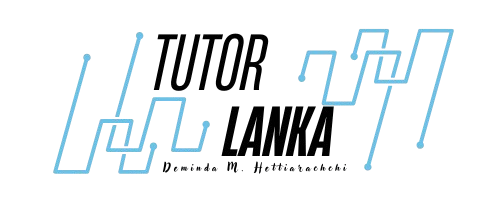Comprehensive Guide to the Sri Lankan A/L I.C.T. Syllabus
The A/L ICT syllabus is developed strictly following the Official National Institute of Education (NIE) guidelines, ensuring alignment with Sri Lanka’s educational standards and global tech trends.
G.C.E. Advanced Level ICT Syllabus: Your Guide to Mastering Technology
The G.C.E. Advanced Level (A/L) Information and Communication Technology (ICT) syllabus in Sri Lanka is designed to equip students with advanced knowledge and practical skills in computing, preparing them for higher education and careers in the ever-evolving tech industry. This comprehensive syllabus covers a wide range of topics, including programming, data communication, database management, and emerging trends like artificial intelligence. By following this structured curriculum, students can build a strong foundation in ICT, ensuring academic success and career readiness.
Syllabus Evolution
The A/L I.C.T. syllabus has undergone significant revisions to align with global technological trends. Here’s a timeline of its development:
First Release
2011 A/L
Introduced foundational ICT concepts, basic programming, and networking principles.
Second Release
2012–2015
Expanded database management and web development topics.
Third Release
2016–2018
Added IoT (Internet of Things) basics and updated programming modules.
Fourth Release
2019 Onward
Current Syllabus: Includes AI, blockchain, cloud computing, and advanced Python programming.
Syllabus Structure
The syllabus is divided into 14 units with a mix of theory, practical skills, and emerging technologies. Below is an expanded breakdown:
|
Unit
|
Topic
|
Key Details
|
Periods
|
Weightage in Exams
|
|---|---|---|---|---|
|
1
|
Basic Concepts of I.C.T.
|
Ethics, societal impact, history of computing.
|
28
|
5%
|
|
2
|
Evolution of Computers
|
Generations of computers, hardware advancements.
|
22
|
4%
|
|
3
|
Data Representation
|
Binary/hexadecimal systems, 2’s complement arithmetic.
|
18
|
6%
|
|
4
|
Digital Circuits
|
Logic gates (AND, OR, NOT), flip-flops, adders.
|
26
|
8%
|
|
5
|
Operating Systems
|
Process states, scheduling algorithms (FCFS, SJF).
|
22
|
7%
|
|
7
|
System Analysis & Design
|
SDLC phases, data flow diagrams (DFD), UML.
|
68
|
20%
|
|
8
|
Database Management
|
ER diagrams, SQL queries, normalization (1NF–3NF).
|
50
|
12%
|
|
9
|
Programming
|
Python syntax, OOP basics, file handling.
|
74
|
25%
|
|
10
|
Web Development
|
HTML/CSS, PHP, MySQL integration.
|
60
|
18%
|
|
11
|
Internet of Things (IoT)
|
Arduino programming, sensors, actuators.
|
15
|
5%
|
|
12
|
ICT in Business
|
E-commerce models, digital marketing.
|
12
|
3%
|
|
13
|
New Trends
|
AI, blockchain, cloud computing.
|
12
|
4%
|
|
14
|
Project
|
Optional real-world ICT project.
|
30
|
Bonus marks
|
Critical Units for Exam Success
Lorem ipsum dolor sit amet, consec tetur adipis cing elit. Ut elit tellus, luctus nec ullam corper mattis, pulvinar dapibus leo.
Networking (Unit 6)
Focus: Master Python loops, functions, and OOP concepts. Exam Tip: Practice past papers on recursive functions and file I/O.
System Analysis & Design (Unit 7)
Focus: SDLC phases (Feasibility Study → Maintenance). Exam Tip: Draw and label DFDs for common scenarios (e.g., library systems).
Programming (Unit 9)
Focus: Master Python loops, functions, and OOP concepts. Exam Tip: Practice past papers on recursive functions and file I/O.
Web Development (Unit 10)
Create a dynamic website using PHP and MySQL (e.g., student management system).
IoT (Unit 11)
Build simple Arduino projects (e.g., temperature sensors).
New Trends (Unit 13)
Study AI basics (machine learning vs. deep learning) and blockchain use cases.
Project Guidelines (Unit 14)
Optional but Recommended: Example Projects: IoT-based home automation, e-commerce platforms. Grading Criteria: Innovation (30%), functionality (40%), documentation (30%).
Some Tips for you
- Prioritize High-Weightage Topics: Allocate 40% of study time to Programming and System Analysis.
- Practice Past Papers: Solve papers from 2019–2024 to understand question patterns.
- Use NIE Resources: Download the Teachers’ Guide for model answers and marking schemes.
- Software Development: Units 9 (Python) & 10 (Web Dev).
- Network Engineering: Units 4 (Digital Circuits) & 6 (Networking).
- Data Science: Units 3 (Data Representation) & 8 (Databases).
- Official Syllabus: NIE I.C.T. Syllabus
- NIE Hotline: 0117-601 601
